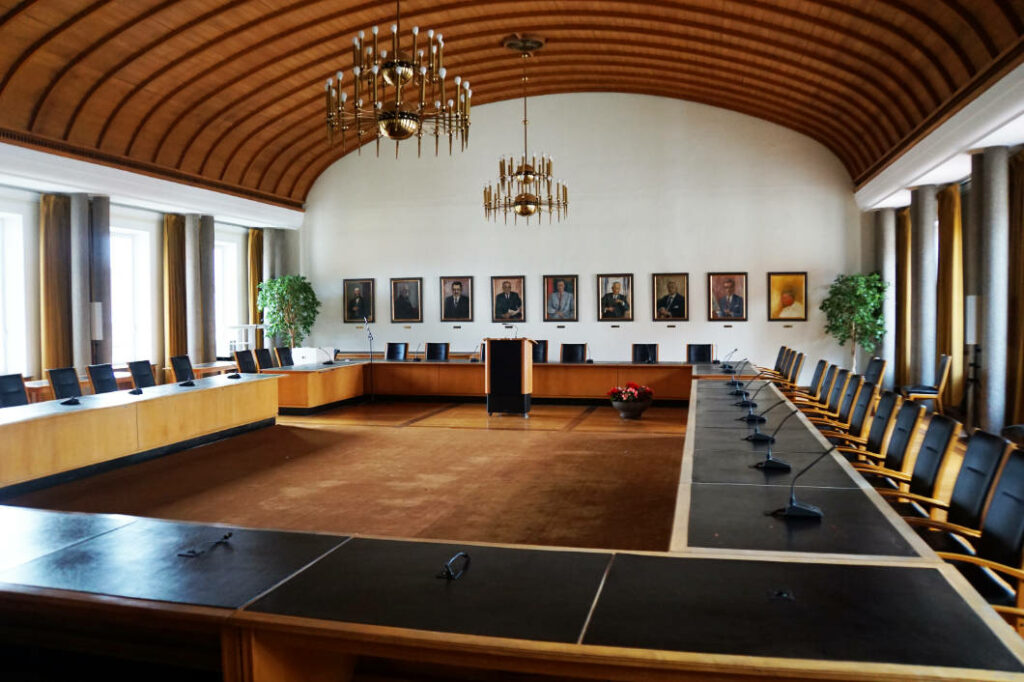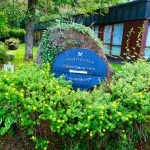During our first stay in the Black Forest, we were drawn to Freudenstadt. Still completely unknown to us, Freudenstadt has been a traditional holiday resort for many years and is also known as a recognised climatic health resort and spa. We were excited to see what we would discover and experience here.
Where is Freudenstadt located?
Freudenstadt is located on a wooded plateau in the northeastern Black Forest, about 66 kilometres from Stuttgart as the crow flies. Freudenstadt can be reached by train from Stuttgart (about every hour) and by car, for example, via the Schwarzwald Hochstraße.
Only about 6 kilometres away is Lossburg, another destination of our stay in the Black Forest.

Our journey of discovery through the history of the city began with a great guided tour.
Over 400 years of city history in brief
Duke Friedrich I was known for his power and economic policies. He promoted mining in the Christoph Valley, settled religious refugees and wanted to secure the Kniebis Pass by building a new residence.
In 1595, he commissioned the master builder Heinrich Schickhardt to investigate the area of today’s Freudenstadt in order to be able to build a residence here. Schickhardt found only forest and, in his opinion, little that was positive about this location and advised against building a town here.

However, the duke insisted on this location and so the master builder began planning. Schickhardt designed a city on the drawing board, a ground plan was created according to the three-line plan. In the centre, a central market square, a castle was to be built at a later date. Initially three, later five rows of houses were arranged around it, similar to a mill board.
In March 1599, the first streets and houses began to be marked out. Half-timbered houses were built with their gables facing the market square (gable houses).

A special feature of the city design were the buildings in the corners of the market square. Angular buildings were planned here, which were intended to give the whole market square a self-contained appearance. In May 1601, the town church (an angular church) was built, in 1602 a department store (as an angular house) in the northwest corner, and in 1660 a town hall (also an angular house) in the northeast corner.
The town, which was to be built in the middle of the forest from 1600, naturally also needed inhabitants. In November 1601, the duke issued a call for tenders to attract settlers. Freudenstadt offered a building site, wood and fields and thus attracted many religious refugees. The number of inhabitants increased noticeably.
In 1608 the duke died, the plans for the construction of a castle were abandoned and the open space in the centre of the city remained. Today, this is the largest built-up market square in Germany.
Shortly after the town was founded, almost 3000 people lived in Freudenstadt. Then came the plague, fires and the Thirty Years’ War, which fundamentally changed life. In 1652, according to records, only 300 citizens lived in the town.
Duke Eberhardt III tried to keep these citizens in the city. He promised 6 years of tax exemption and even 12 years of tax exemption for new citizens. In addition, they were to receive building plots at reduced prices and were given the timber as a gift. Life returned to the town.
An important step in Freudenstadt’s development began at the beginning of the 19th century, when Freudenstadt developed into a health resort. Hotels opened, such as the Hotel Waldlust .

Out of 20 hotels in the town, 5 were in the best category and the spa town in the Black Forest became known worldwide. Guests from all over the world came, such as John D. Rockefeller and the English King George V.
During the Second World War, a Wehrmacht command centre was located in the immediate vicinity of Freudenstadt. Hitler’s visit to the town after the French campaign was propagandistically marketed. Freudenstadt was regarded in France at that time as a symbol of the Nazi regime and the French defeat. In 1945, shortly before the end of the war, French troops unexpectedly attacked the town. The bombing and artillery shelling lasted for 16 hours. In the end, 95% of the city centre was destroyed and many people had lost their lives.
When asked how the city should be rebuilt, there were many variants that were discussed. It was decided to rebuild the city as a planned city, but it was also important to take modern requirements into account. After only 5 years, the reconstruction was completed. This is still referred to today as the “Miracle of Freudenstadt”. The sculpture that stands on the market square today is a reminder of this.

Tour of Freudenstadt’s market square
We start our tour on the largest built-up market square in Germany. Today’s square measures 4.74 ha and is divided into an Upper Market Square and a Lower Market Square. The Upper Market Square is often used for events and markets and also has an underground car park.

A green oasis has been created in the Lower Market Square in the middle of the city. In addition to the annual flower plantings, there are also very interesting trees, such as a sequoia. A large area is taken up by a fountain, which is particularly popular with children in summer, as they can play here.

Our visit begins on the Upper Market Square and we look at the Neptune Fountain from 1761. Behind it is the Town House with the Café Pause and the Museum about Freudenstadt. The arcades around the market square are something very special. Here you can take a wonderful walk and discover small shops.
Museum Stadthaus
On 5 levels, you can learn about the history of the town of Freudenstadt and the district in the museum.

Already in the entrance area of the first floor of the house, one learns something about the topic of air snappers and tourists in Freudenstadt. As we had already learned during the tour of the Hotel Waldlust, tourists were drawn to Freudenstadt early on. Whether by train or via the Black Forest High Road, those who were looking for fresh air went to the Black Forest. Some beautiful exhibits here remind us of that time.
The first floor is all about the reconstruction of the town and an art cabinet displays works from the Freudenstadt district.

When you reach the third floor, you are in the Schweizersaal. In showcases around the hall, you walk along historical paths through Freudenstadt. I was particularly impressed by the hall, which has a barrel-shaped roof and is impressive by its size alone. The ideal place for events.
My personal highlight in the museum was the 4th and 5th floor. On the top floor, many small trades of the region are presented in small areas. The trades, some of which are almost extinct, and their traditional clothing, tools and products are presented very vividly in my eyes. Here we also find information about mining in Freudenstadt, which we had already dealt with in the visitor mine.


A little tip on the side – just take a look out of the window. You have a great view of the market square.
Opening hours:
Tuesday – Sunday: 10-17 h
Monday closed
Admission fee:
free
Stadtkirche
We continue on to the Lower Market Square. Here, at the southern corner, is the Protestant town church. This church is already something special from the outside, it is an angle church that stands exactly in the angle of the corner of the square. At both ends there is a steeple, a bell tower and a clock tower.

I find it interesting that trade on the market square used to be concluded “under the eyes of God” directly at the church. Even today, you can find a metal rod here that served as a unit of measurement and also helped to weigh the purchases.
Unfortunately, we could not go into the church due to construction work. But on pictures, which are on the market square, you can see very well how the nave is built. The special thing is that the altar and the pulpit are located at an angle between the wings. This made it possible for the pastor to see the worshippers seated separately by gender in both sections of the church.
Freudenstadt Town Hall
Our tour takes us back to the Upper Market Square. Before we enter the town hall, we pass a modern fountain with ravens. Here our city guide has told a nice story about each raven, which fits well to the political work in a city and describes the different characters excellently.

Then we go to the political centre of Freudenstadt, the town hall.
The town hall stands at the northern corner of the market square and we were able to climb the 127 steps of the 43 metre high tower and look down on the city from there.
The view extended far beyond the Hotel Waldlust, which we also visited.

I particularly liked the view of the market square. From up here, the size was even more impressive. You could also see the structure of the city very well. From up here, the “Mühlespielbrett” (mill board) was clearly visible and once again gave me a good idea of the city’s structure.
You can climb the tower during the opening hours of the town hall.

We were able to take a look at the wood-panelled council chamber. Here, pictures of the Freudenstadt mayors hang on the front wall.

Opening hours:
Monday-Friday: 8am-12pm
Thursday: additionally 14-17.30
Admission fee:
free of charge
You can pick up the key at the Citizen Service Centre.
Disclosure: The exciting and very informative city tour was an item on the programme of the blogger trip to the Black Forest – we enjoyed it very much. Thank you very much! The report was written independently of the visit and reflects our impressions.







Leave a Reply